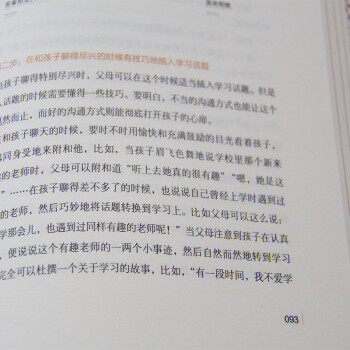热门推荐商品
-
神奇的逻辑思维游戏书 5-13岁提升孩子逻辑思维训练
¥22.50
-
正面管教 修订版 如何不惩罚不娇纵有效管教孩子 育儿百科 最温柔的教养 樊登 早教书
¥19.00
-
一本书读懂中国茶
¥24.90
-
中国国家地理:最好的时光在路上
¥24.90
-
正面管教儿童行为心理学
¥19.00
-
正面管教男孩100招(养育男孩全书)父母的语言话术
¥18.00
-
陪孩子度过7~9岁叛逆期(7-9岁关键养育 叛逆不是孩子的错 男孩女孩自驱型成长)
¥16.30
-
女生呵护指南
¥39.00
-
西尔斯怀孕百科
¥41.50
-
协和医院专家教你吃对不生病:糖尿病吃什么宜忌速查
¥14.90
- 商品名称:统计场论(第1卷)
- 商品编号:10914260
内容简介
Some ten years ago, when completing with J.-B. Zuber a previous text on Quantum Field Theory, the senior author was painfully aware that little mention was made that methods in statistical physics and Euclidean field theory were coming closer and closer, with common tools based on the use of path integrals and the renormalization group giving insights on global structures. It was partly to fill this gap that the present book was undertaken. Alas, over the five years that it took to come to life, both subjects have undergone a new evolution. Disordered media, growth patterns, complex dynamical systems or spin glasses are among the new important topics in statistical mechanics, while superstring theory has turned to the study of extended systems, Kaluza-Klein theories in higher dimensions, anticommuting coordinates ... in an attempt to formulate a unified model including all known interactions. New and sophisticated techniques have invaded statistical physics, ranging from algebraic methods in integrable systems to fractal sets or random surfaces. Powerful computers or special devices provide "experimental" means for a new brand of theoretical physicists. In quantum field theory, applications of differential topology, geometry, Riemannian manifolds, operator theory ... require a deeper background in mathematics and a knowledge of some of its most recent developments. As a result, when surveying what has been included in the present volume in an attempt to uncover the basic unity of these subjects, the authors have the same unsatisfactory feeling of not being able to bring the reader really up to date. It is presumably the fate of such endeavours to always come short of accomplishing their purpose.目录
Contents of Volume 2Preface
1 From Brownian motion to Euclidean fields
1.1 Brownian motion
1.1.1 Random walks
1.1.2 The sum over paths
1.1.3 The dimension two of Brownian curves
1.2 Euclidean fields
1.2.1 Free fields
1.2.2 Interacting fields and random walks
1.2.3 Self-avoiding walks and the limit n → 0
1.2.4 Comparison with the high temperature expansion
1.2.5 The one-dimensional case
1.A Lattices
Notes
2 Grassmannian integrals and the two-dimensional Ising model
2.1 Grassmannian integrals
2.1.1 Anticommuting variables
2.1.2 Integrals
2.2 The two-dimensional Ising model
2.2.1 Duality
2.2.2 Transfer matrix
2.2.3 Fermionic representation
2.2.4 Free energy
2.2.5 Spontaneous magnetization
2.2.6 Correlation function in the high temperature phase
2.2.7 Surface tension
2.3 Critical continuous theory
2.3.1 Effective action
2.3.2 Correlation functions
2.A Quadratic differences and Painleve equations Notes
3 Spontaneous symmetry breaking, mean field
3.1 Mean field approximation
3.1.1 Dielectric coastant of a polarizable medium
3.1.2 Classical spin model with a finite symmetry group
3.1.3 Continuous symmetry group
3.1.4 The Bethe approximation
3.1.5 Critical exponents
3.2 Lee-Yang zeroes
3.2.1 The Lee-Yang theorem
3.2.2 The one-dimensional case
3.2.3 General properties
3.2.4 Zeroes in the temperature plane
3.3 Large n limit
3.3.1 Saddle point method
3.3.2 Factorization
3.3.3 Coupling to an external field
3.4 Corrections to mean field
3.4.1 Laplace transform Notes
4 Scaling transformations and the XY-model
4.1 Scaling laws. Real space renormalization
4.1.1 Homogeneity and scale invariance
4.1.2 Recurrence relations in real space
4.1.3 Examples and approximations
4.2 The XY-model
4.2.1 High temperature behaviour
4.2.2 Low temperature expansion. Vortices
4.2.3 The Villain action
4.2.4 Correlations
4.2.5 Renormalization flow
4.A Two-dimensional systems with continuous symmetry
4.A.1 Magnetization inequality
4.A.2 Correlation inequality
4.B Phenomenological renormalization Notes
5 Continuous field theory and the renormalization group
5.1 The Lagrangian and dimensional analysis
5.1.1 Introduction
5.1.2 Generating functionals and dimensional analysis
5.2 The perturbative method
5.2.1 Diagrammatic series
5.2.2 Loop expansion
5.2.3 Evaluation of integrals and dimensional continuation
5.2.4 Group theoretical factors
5.2.5 Power counting
5.2.6 Perturbativc renormalization
5.3 The renormalization group
5.3.1 Renormalization flow
5.3.2 Critical exponents
5.3.3 From the Gaussian ultraviolet fixed point to the infrared critical point in dimension less than four
5.3.4 Correlation functions at the critical point
5.3.5 Expansion near the critical point
5.3.6 Scaling laws below the critical temperature
5.4 Corrections to scaling laws
5.4.1 Deviation from the critical point in dimension lower than four
5.4.2 Logarithmic corrections in dimension four
5.4.3 Irrelevant operators
5.5 Numerical results
5.5.1 e-expansion of critical exponents
5.5.2 Equation of state
5.5.3 Amplitude ratios
5.5.4 Three-dimensional results
5.A Multicritical points Notes
6 Lattice gauge fields
6.1 Generalities
6.1.1 Presentation
6.1.2 The continuous limit
6.1.3 Order parameter and Elitzur''s theorem
6.1.4 Duality
6.2 Structure of the phase diagram
6.2.1 Mean field approximation
6.2.2 Corrections to mean field and restoration of gauge invariance
6.2.3 Discrete groups: 1/d expansion
6.2.4 Continuous groups: computation of corrections
6.3 Strong coupling expansions
6.3.1 Convergence
6.3.2 Character expansions
6.3.3 Free energy
6.3.4 String tension and roughening transition
6.3.5 Mass spectrum
6.4 Lattice fermions
6.4.1 The doubling problem
6.4.2 The Nielsen-Ninomiya theorem
6.4.3 Staggered fermions
Notes
Index


















 沪公网安备 31010402003631号
沪公网安备 31010402003631号